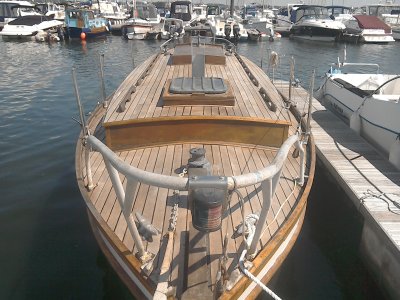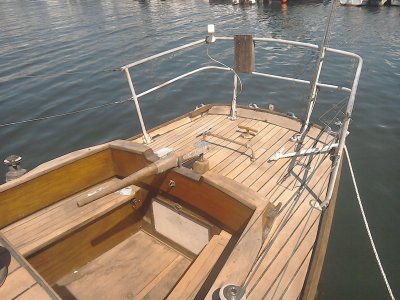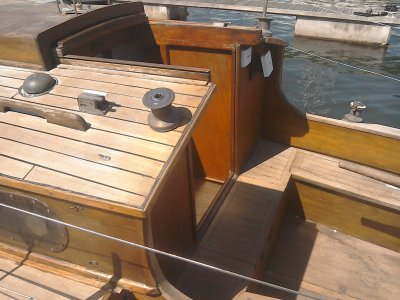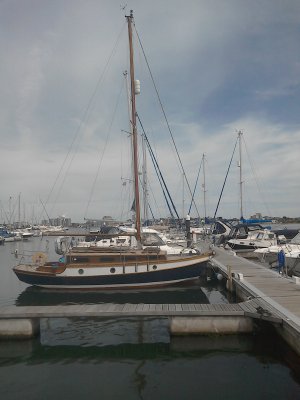Flying Fox
New member
Hi All,
I'm new here and new to restoration so please excuse any seemingly ignorant questions.
We have recently acquired a 1953 Itchenor built "Belouga" cruiser/racer which has been on the hard for about 10 years. She has been surveyed and is in "surprisingly good condition" considering she had about 6 inches of freshwater sat in her hull. The previous owners (she was jointly owned) had her hull sanded, filled, and faired then coated with the West Epoxy GRP system as well as coating her bilge in bitumen (which has been attributed as the reason she's still with us).
I have drained the bilge, cleared the debris and noticed some of the bitumen coming up (after 10 years I'm really not surprised). Some of the timber was damp underneath so I started removing the bitumen and it has dried out beautifully. I'm planning on removing all the bitumen and painting the bilge but I have two questions...
1) Would you coat the newly exposed timber in the bilge with anything, if so what? and why?
2) What Bilge paint do you use on your wooden boats?
I know GRP is not ideal i have read plenty of posts and articles to that fact. However, these are the cards we've been dealt.
I'm new here and new to restoration so please excuse any seemingly ignorant questions.
We have recently acquired a 1953 Itchenor built "Belouga" cruiser/racer which has been on the hard for about 10 years. She has been surveyed and is in "surprisingly good condition" considering she had about 6 inches of freshwater sat in her hull. The previous owners (she was jointly owned) had her hull sanded, filled, and faired then coated with the West Epoxy GRP system as well as coating her bilge in bitumen (which has been attributed as the reason she's still with us).
I have drained the bilge, cleared the debris and noticed some of the bitumen coming up (after 10 years I'm really not surprised). Some of the timber was damp underneath so I started removing the bitumen and it has dried out beautifully. I'm planning on removing all the bitumen and painting the bilge but I have two questions...
1) Would you coat the newly exposed timber in the bilge with anything, if so what? and why?
2) What Bilge paint do you use on your wooden boats?
I know GRP is not ideal i have read plenty of posts and articles to that fact. However, these are the cards we've been dealt.




